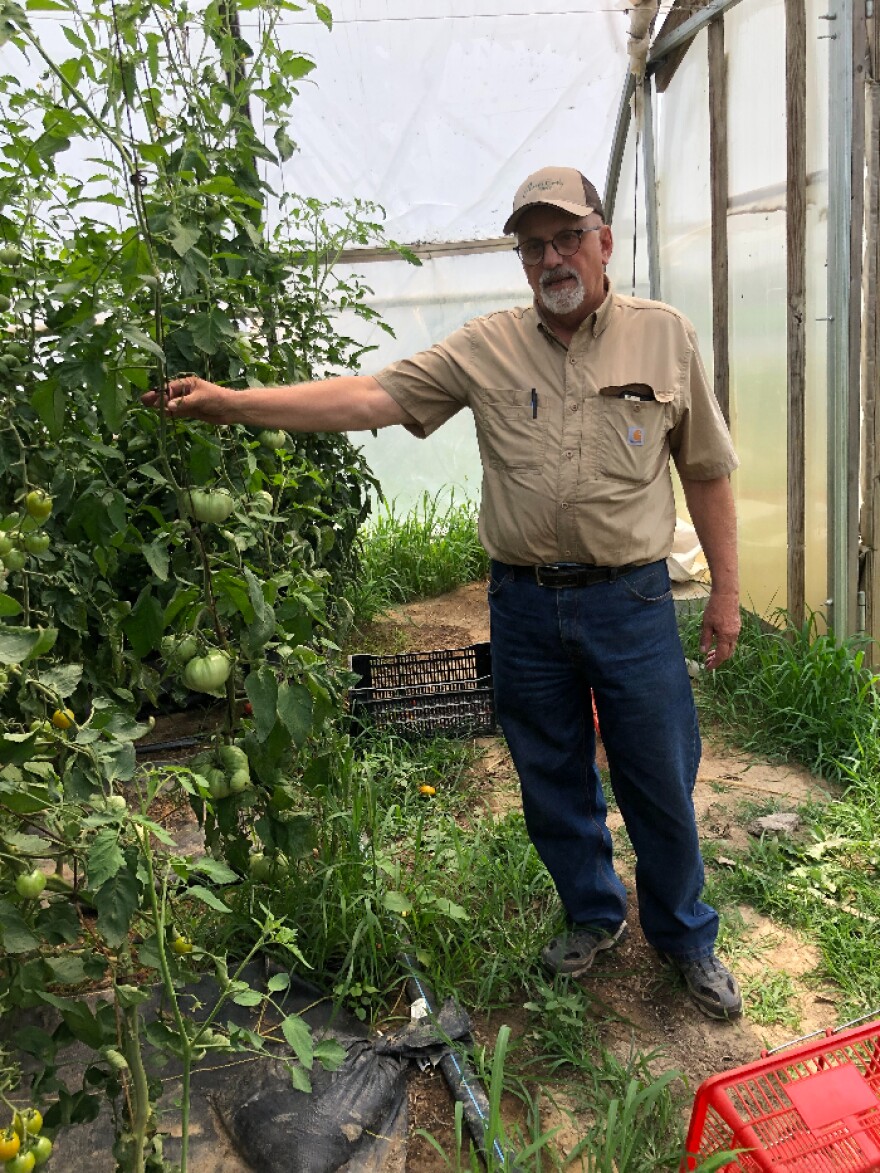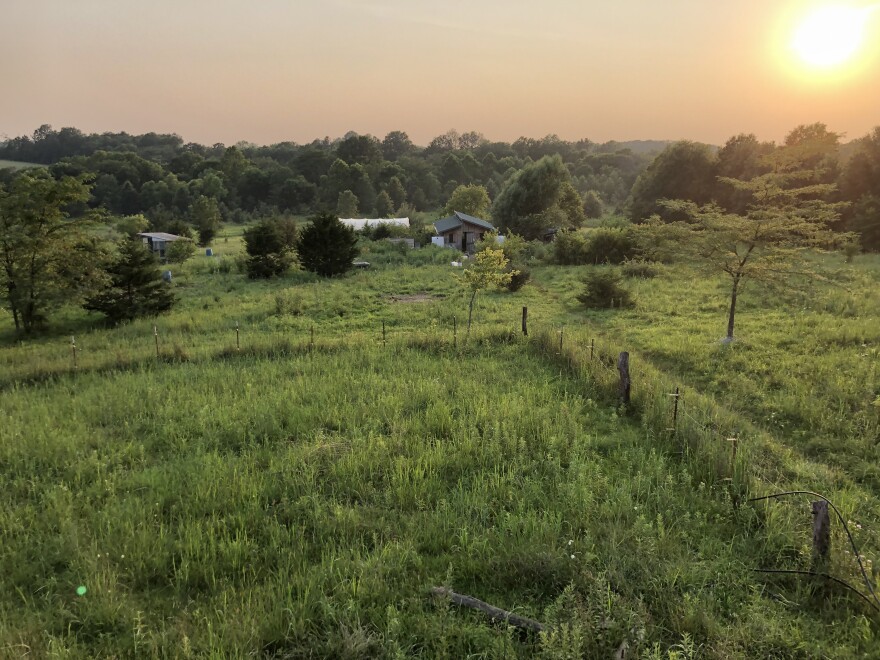Dave Bishop has been farming in Atlanta, Illinois since 1978. His organic farm — PrairiErth — grows wheat and all kinds of vegetables, like kale, beets and tomatoes. Bishop has crops growing every month of the year, but the farms surrounding him, in every direction, don’t.
Bishop gestures toward some of those other farms. “From spring to October, you see something green and growing,” he said. “The other six months of the year, the factory’s doors are shut.”
Meaning, nothing’s growing. The fields are simply dirt, with no plants on them sucking carbon from the air.
“We operate the land for six months and then we just let it sit there, bare naked, and wash away,” said Bishop. “Now tell me how that makes any sense. What other business operates like that?”
The agriculture industry accounts for 10% of total U.S. greenhouse gas emissions, a big driver of climate change. Some farmers, like Bishop, are turning to an inexpensive solution to capture carbon dioxide from the atmosphere: cover crops.
Bishop's mix includes medium red clover, tillage radishes, Dutch white clover, Sudan grass, cereal rye, hairy vetch, buckwheat and field peas.

Like all plants, Bishop’s cover crops take the one thing we really don’t need in our atmosphere, the biggest contributor to the warming of our planet — carbon dioxide — out of our air and hold it in their cells and the soil.
“Your cover crops are an example of how you're taking green matter — carbons, essentially, which is what it's all made up of — and you're keeping it here. You're not letting go of it,” Bishop said.
Another farmer, Ben Brownlow of Rutledge, Missouri, takes a different approach. On his farm, Fox Holler Farmstead, Brownlow raises pigs, turkeys, ducks, chickens, goats, cows and trees.
“One poorly-timed flood or drought can sink somebody who's raising a field of corn or a field of beans,” Brownlow said. “Trees, once they're established, can weather that a lot better.”
Unlike cover crops, which need to be planted each year, trees capture and sequester carbon continuously.
“If I fall down and get eaten by the pigs tomorrow, the trees are still going to continue the work that I started,” Brownlow joked. “They are more dedicated to sequestering carbon than I am.” He paused to survey his tree orchard. “And there's something poetic about planting trees, right?”
Brownlow is trying to figure out how to capture as much climate-warming carbon dioxide as possible while raising food. He grows all kinds of trees — hazelnuts, Asian pears, apples and chestnuts.
“If you’re trying to sequester as much carbon with a piece of land as possible in our climate, this sort of temperate, North American climate, a 20% canopy to 80% grass has the most photosynthetic surface,” he said.
In other words, Brownlow is planting for optimum carbon reduction: 20% tree canopy and 80% grasses, shrubs, and other crops growing underneath in order to capture and sink the maximum amount of carbon.

According to Brownlow, sinking carbon is the best way to offset agriculture’s greenhouse gas emissions. So he’s experimenting: planting different varieties and regularly testing his soil for carbon content.
Brownlow said his on-pasture trials seek to solve how we can save ourselves from what he calls an "inevitable climate catastrophe."
Because even as he ponders the dark, overarching climate situation, Brownlow’s individual actions are optimistic. He said he’s constantly asking: “What are the positive things we can do to sink carbon into the soil?”
The vast majority of U.S. farmers aren’t like Brownlow and Bishop. They’re not actively trying to sequester carbon. Nationally, only 4% of U.S. cropland has cover crops.
When it comes to trees, it’s not yet clear how many farmers are planting them. Last month, the U.S. Department of Agriculture concluded a from 11,000 farmers and ranchers to find out more.
Regardless of what that data shows, Brownlow says he’ll keep experimenting with trees.
“That stuff is exciting for me,” he said. “It’s overwhelming to think how many people would have to do that at what scale to make a dent, but that keeps from being too depressed to think about those possibilities.”
Follow Eve on Twitter
This story comes from the new podcast from the Food & Environment Reporting Network.
This story was produced in partnership with Harvest Public Media, a collaboration of public media newsrooms in the Midwest. It reports on food systems, agriculture and rural issues. Follow Harvest on Twitter:




